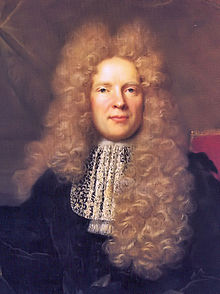Wigs were first known to be used in ancient Egypt to shelter their bald heads from the sun. They were also used as part of costumes in shows and displays in Greece, Rome, China and Japan.
In the 16th and 17th Century head lice became a big problem to the population and they found this much easier to resolve by having shaven heads and they all wore artificial hair.
Wigs for men were introduced into the English-speaking world with other French styles when Charles II was restored to the throne in 1660, following a lengthy exile in France. These wigs were shoulder-length or longer, imitating the long hair that had become fashionable among men since the 1620s. Their use soon became popular in the English court. The London diarist Samuel Pepys recorded the day in 1665 that a Barber had shaved his head and that he tried on his new periwig for the first time, but in a year of plague he was uneasy about wearing it.
The wearing of wigs as a symbol of social status was largely abandoned in the newly created United States and France by the start of the 19th century. In Britain most nations, and the Republic of Ireland special wigs are also worn by barristers, judges, and certain parliamentry and municipal or civic officials as a symbol of the office.
 Wigs are used in film, theatre, and television. Only a few actors starring in big-budgeted films and television series will grow their hair so that it may be cut to the appropriate hair style, and forgo using a wig.
Wigs are used in film, theatre, and television. Only a few actors starring in big-budgeted films and television series will grow their hair so that it may be cut to the appropriate hair style, and forgo using a wig.Wigs are worn by some people on a daily or occasional basis in everyday life. This is sometimes done for reasons of convenience, since wigs can be styled ahead of time. They are also worn by individuals who are experiencing hair loss due to medical reasons (most commonly cancer patients who are undergoing chemotherapy or those who are suffering from alopecia.

No comments:
Post a Comment